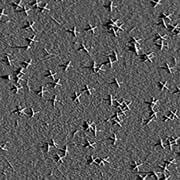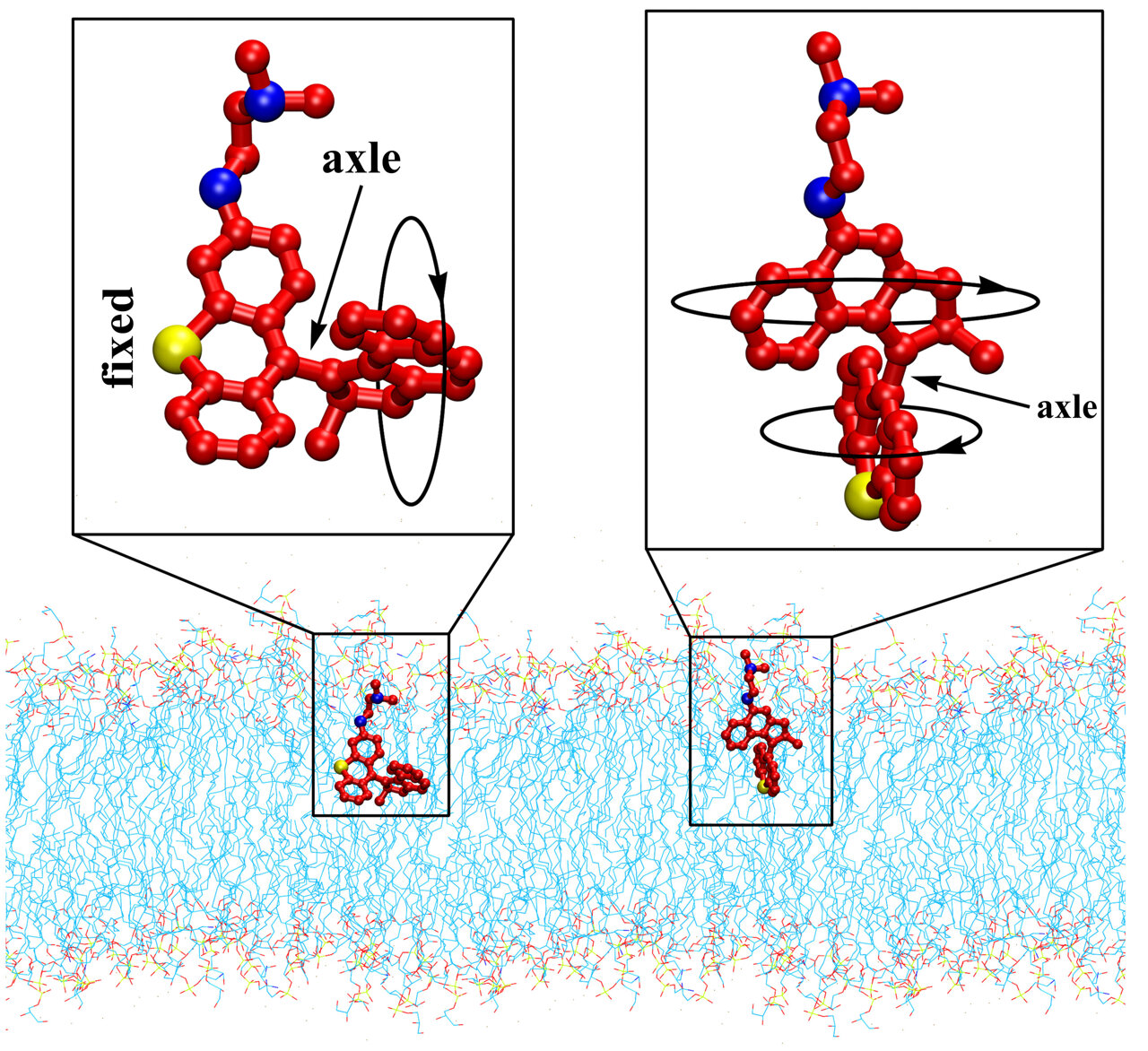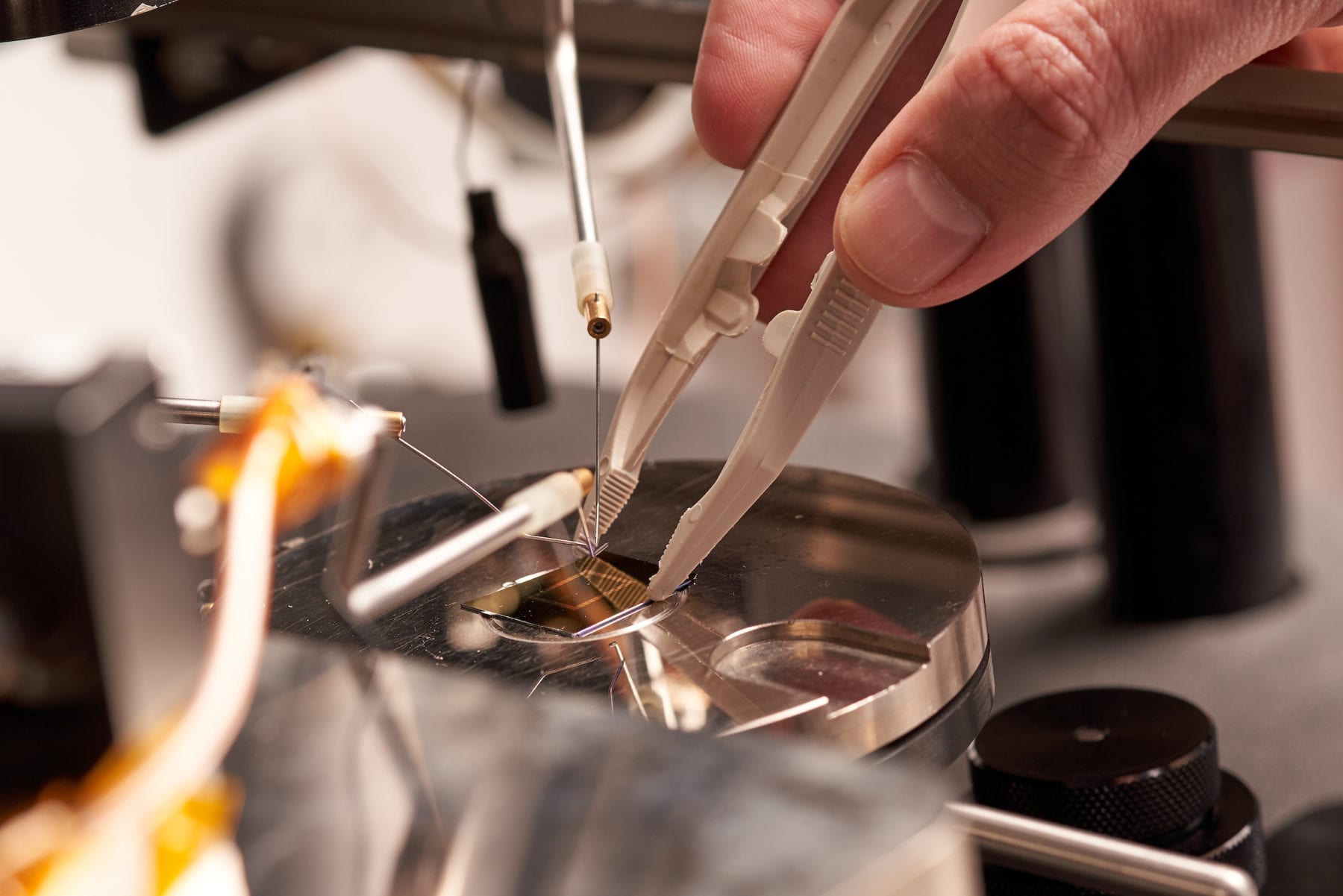
A new spin on DNA
Every year, robots get more and more life-like. Solar-powered bees fly on lithe wings, humanoids stick backflips, and teams of soccer bots strategize how to dribble, pass, and score. The more researchers discover about how living creatures move, the more machines can imitate them all the way down to their smallest molecules.
“We have these amazing machines already in our bodies, and they work so well,” said Pallav Kosuri. “We just don’t know exactly how they work.”
For decades, researchers have chased ways to study how biological machines power living things. Every mechanical movement—from contracting a muscle to replicating DNA—relies on molecular motors that take tiny, near-undetectable steps.
Trying to see them move is like trying to watch a soccer game taking place on the moon.
Now, in a recent study published in Nature, a team of researchers including Xiaowei Zhuang, the David B. Arnold Professor of Science at Harvard University and a Howard Hughes Medical Institute Investigator, and Zhuang Lab postdoctoral scholar Pallav Kosuri and Benjamin Altheimer, a Ph.D. student in the Graduate School of Arts and Sciences, captured the first recorded rotational steps of a molecular motor as it moved from one DNA base pair to another.
In collaboration with Peng Yin, a professor at the Wyss Institute and Harvard Medical School, and his graduate student Mingjie Dai, the team combined DNA origami with high-precision single-molecule tracking, creating a new technique called ORBIT—origami-rotor-based imaging and tracking—to look at molecular machines in motion.
In our bodies, some molecular motors march straight across muscle cells, causing them to contract. Others repair, replicate or transcribe DNA: These DNA-interacting motors can grab onto a double-stranded helix and climb from one base to the next, like walking up a spiral staircase.
To see these mini machines in motion, the team sought to take advantage of this twisting movement. First, they glued the DNA-interacting motor to a rigid support. Once pinned, the motor had to rotate the helix to get from one base to the next. So, if they could measure how the helix rotated, they could determine how the motor moved.
But there was still one problem: Every time one motor moves across one base pair, the rotation shifts the DNA by a fraction of a nanometer. That shift is too small to resolve with even the most advanced light microscopes.
Two pens lying in the shape of helicopter propellers gave the team an idea: A propeller fastened to the spinning DNA would move at the same speed as the helix and, therefore, the molecular motor. If they could build a DNA helicopter large enough that the swinging rotor blades could be visualized, they could capture the motor’s elusive movement on camera.
To build molecule-sized propellers, Kosuri, Altheimer and Zhuang decided to try DNA origami. Used to create art, deliver drugs to cells, study the immune system, and more, DNA origami involves manipulating strands to bind into beautiful, complicated shapes outside the traditional double-helix.
“If you have two complementary strands of DNA, they zip up,” Kosuri said. “That’s what they do.” But, if one strand is altered to complement a strand in a different helix, they can find each other and zip up instead, weaving new structures.
For help constructing their propellers, the team enlisted Peng Yin, a pioneer of DNA origami technology. With guidance from Yin and his graduate student Dai, the team wove almost 200 individual pieces of DNA snippets into a propeller-like shape 160 nanometers in length. Then, they attached the blades to a regular double-helix and fed the other end to RecBCD, a molecular motor that unzips DNA. When the motor got to work, it spun the DNA, twisting the propellers like a corkscrew.
“No one had seen this protein actually rotate the DNA because it moves super-fast,” Kosuri said.
The motor can move across hundreds of bases in less than a second. But, with their origami propellers and a high-speed camera running at a thousand frames per second, the team could finally record the motor’s fast rotational movements.
“So many critical processes in the body involve interactions between proteins and DNA,” said Altheimer. Understanding how these proteins work—or fail to work—could help answer fundamental biological questions about human health and disease.
So, the team started to explore other types of DNA motors. One, RNA polymerase, moves along DNA to read and transcribe the genetic code into RNA. Inspired by previous research, the team theorized this motor might rotate DNA in 35-degree steps, corresponding to the angle between two neighboring nucleotide bases.
ORBIT proved them right: “For the first time, we’ve been able to see the single base pair rotations that underlie DNA transcription,” Kosuri said. Those rotational steps are, as predicted, around 35 degrees.
Millions of self-assembling DNA propellers can fit into just one microscope slide, which means the team can study hundreds or even thousands of them at once, using just one camera attached to one microscope. That way, they can compare and contrast how individual motors perform their work.
“There are no two enzymes that are identical,” Kosuri said. “It’s like a zoo.”
One motor protein might leap ahead while another momentarily scrambles backwards. Yet another might pause on one base for longer than any other. The team doesn’t yet know exactly why they move like they do. Armed with ORBIT, they soon might.
ORBIT could also inspire new nanotechnology designs powered with biological energy sources like ATP. “What we’ve made is a hybrid nanomachine that uses both designed components and natural biological motors,” Kosuri said.
One day, such hybrid technology could be the literal foundation for biologically-inspired robots.
Learn and see more: A new spin on DNA
The Latest on: Nanoscale machines
[google_news title=”” keyword=”nanoscale machines” num_posts=”10″ blurb_length=”0″ show_thumb=”left”]
via Google News
The Latest on: Nanoscale machines
- Researchers 'unzip' 2D materials with laserson May 7, 2024 at 8:42 am
In a new paper published on May 1 in the journal Science Advances, researchers at Columbia Engineering used commercially available tabletop lasers to create tiny, atomically sharp nanostructures, or ...
- fruit machineon May 5, 2024 at 5:00 pm
For some reason, when slot machines went digital, they lost their best feature — the handle. Who wants to push a button on a slot machine, anyway? Might as well just play video poker.
- Best washing machines in 2024on May 2, 2024 at 9:13 am
Every household needs one of the best washing machines to tackle laundry chores and make it a breeze. Whether you have a large family or smaller household, you'll need to find a powerful machine ...
- The 7 best espresso machines of 2024, tested and reviewedon May 1, 2024 at 12:07 pm
Learn more Cafe-quality drinks at home call for an espresso machine, and finding the best espresso machine for your needs depends on a few things. If you like to linger over the process (or are a ...
- Nanoscale gadgetson May 1, 2024 at 11:36 am
For the study of artificial molecular machines, synthetic strategies are used that allow the design and preparation of functional molecules and aggregates. Chemists have learned how to control ...
- First high-resolution 3D nanoscale chemical imaging achieved with multi-modal tomographyon April 30, 2024 at 6:21 am
By exploiting a smart learning algorithm that fuses two microscopy signals, University of Michigan researchers have accomplished high-resolution, efficient 3D chemical imaging for the first time at ...
- Best White Noise Machines for 2024on April 26, 2024 at 9:30 am
If you toss and turn or wake up frequently at night, a white noise machine could help you sleep more soundly and get the rest you need. The best white noise machine (also known as a sound mach ...
- The Best Karaoke Machines To Sing Your Heart Outon April 26, 2024 at 8:37 am
The best karaoke machines make it so straightforward to enjoy one of the world’s favorite pastimes: making it easy to sing your heart out. Unlike traditional karaoke machines or apps ...
- Best rowing machines 2024: Top 5 picks from ProForm, Ergatta and moreon April 24, 2024 at 3:19 am
The best rowing machines offer a great way to boost your stamina and cardiovascular health without putting a strain on your joints — or, for that matter, draining your wallet. A full-body ...
- The best Brother sewing machines according to expertson April 23, 2024 at 7:16 am
The best equipment yields the best results, and Brother sewing machines are well-known in the world of sewing, quilting, and crafting for their quality and innovative features. This model is a ...
via Bing News










